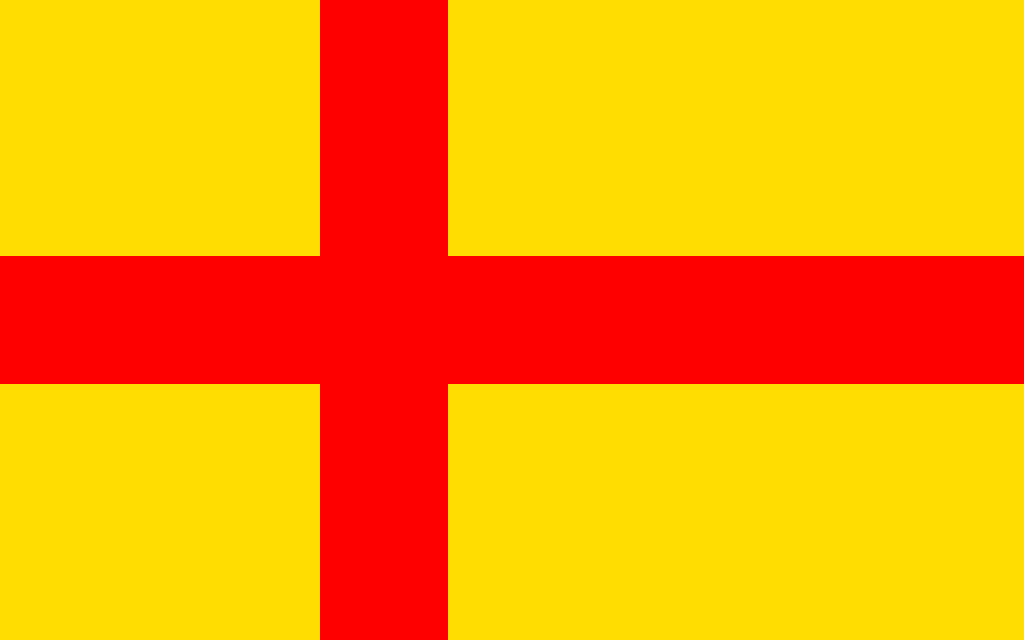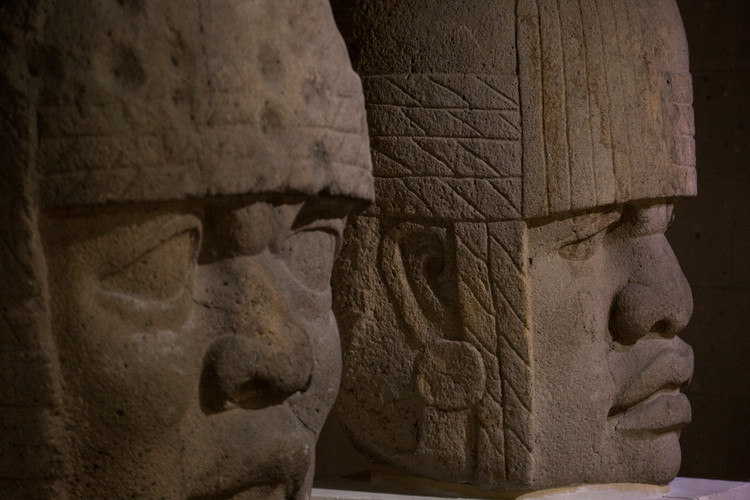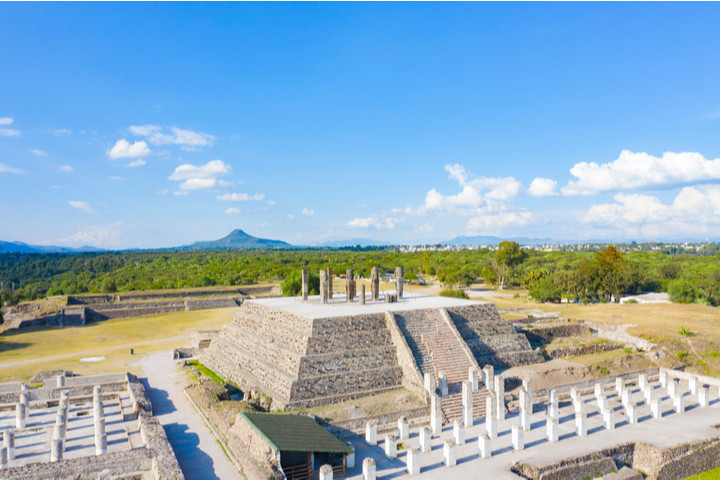The Kalmar Union (Kalmarunionen in Danish, Swedish and Norwegian) is a union formed by the three Scandinavian Kingdoms of Denmark, Sweden and Norway from 1397 to 1523 (with several interruptions).
Key Facts
Government
| Government type | Monarchy in personal union |
| Capital | Roskilde (1397 – 1416) Copenhagen (1416 – 1523) |
Kings
| 1387 – 1442 | Eric of Pomerania also known as: King Eric III of Norway King Eric VII of Denmark King Eric XIII of Sweden |
| 1449 – 1457 | King Christian I of Denmark, Norway and Sweden |
| 1497 – 1501 | King John I of Denmark and Norway and as John II of Sweden |
| 1513 – 1523 | King Christian II of Denmark, Norway and Sweden |
Timeline
| 20 July 1397 | The Union was founded by the initiative of Margaret I of Denmark |
| 28 October 1412 | Dead of Margaret I of Denmark |
| 1434 – 1436 | Engelbrekt rebellion |
| 4 – 10 November 1520 | Stockholm Bloodbath |
| 6 June 1523 | Dissolution |
People
| Population | 1 320 000 |
| Density of population | 2/km2 (5/sq mi) |
| Official languages | Middle Danish, Old Swedish, Middle Norwegian, Renaissance Latin |
| Religion | Roman Catholicism |
Geography
| Area | 600 000 km2 ( 230 000 sq mi) |
Creation of the Union
The Union was founded by the initiative of Margaret I of Denmark, which became in 1387 the Queen of the three kingdoms (Denmark, Norway and Sweden) before she gave up her place to her grandnephew, Eric of Pomerania, in 17 June 1397.
The Kalmar Union look like a confederation with each of the three kingdoms maintained their independence (they hold their own law and administration), but have a common king and administrations.
Location of the Kalmar Union on the world map
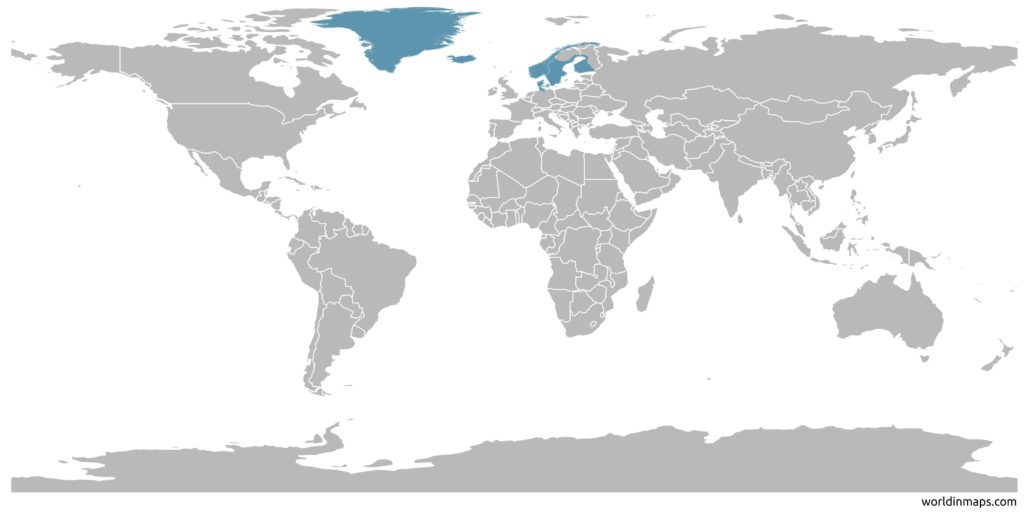
The Kalmar Union was located in the following present-day countries:
Kalmar Union map
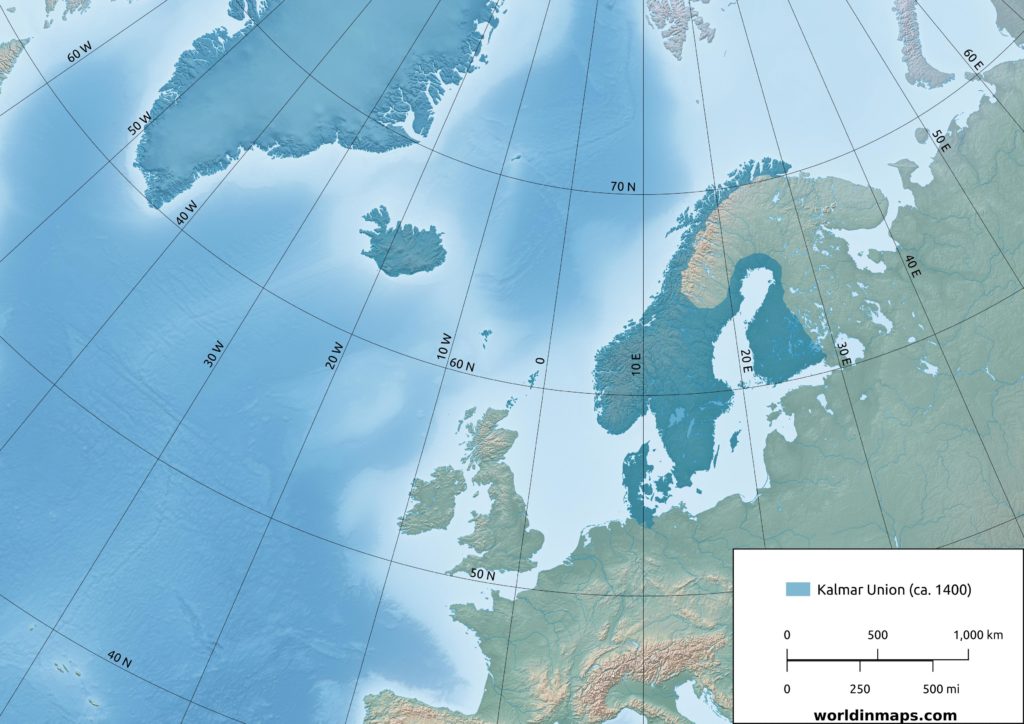
Rebellion and dissolution of the Union
After the death of Margaret I in 1412, the attempts to accumulate the power by the Danish crown and the supremacy wars between Denmark and Sweden bring the Union in trouble within 1434 the rebellion led by Engelbrekt Engelbrektsson against Eric of Pomerian.
The Union is broken a first time by the election of Karl Knutsson as king of Sweden in 1448 and king of Norway in 1449.
In 1457 Christian I took the control back of the three kingdoms and the Union was renewed.
Then, the Union was broken again in 1464 before the three kingdoms are again unified under John I of Denmark in 1497.
In 1513, Christian II succeeded to his Father, John I. He became king of Denmark and Norway, but Sweden refused to recognize him as King. Christian II managed to reconquest Sweden and they were obliged to recognize him as King.
As a result, the Swedes rebelled against Christian II of Denmark and he is chased away of Sweden. On 6 June 1523 Gustav Vasa is elected king of Sweden and it marked the end of the Kalmar Union.
